Pakistan
Before this no-confidence move, there was another one
When Pakistan People's Party (PPP) chairman Bilawal Bhutto Zardari said that he will try to convince the opposition on bringing a no-confidence move against Prime Minister Imran Khan, his comment was either cursed in certain quarters or welcomed in others.
The minister most detached from his matters pertaining to his ministry, Sheikh Rasheed, was the happiest, commenting in glee that Bilawal had finally come of age. Those familiar with the neighborhood culture will understand that in such situations, both the one coming of age and the dubious one who announces it become suspicious. However, it remains to be examined, was Bilawal Bhutto Zardari's statement really politically mature?
Let's walk back a bit, to August 2019 when the opposition brought about a no-confidence move in the senate. 64 votes were needed for the ouster of Sajid Sanjrani, and this was the number of senators who dined at the meeting before the vote. Ultimately though, 50 votes were found in the box. The rest just disappeared.
In what was a delightful slip of tongue, a veteran lawyer said that a "secret battle" had taken place. No doubt he wanted to say "secret ballot". These days, this lawyer is one of the plaintiffs in a case before the courts, pleading for holding senate elections through open ballot.
We can argue whether the failure of the 2019 movement was a cause or an effect. There were rumors that members who favour reconciliation did not disappear but instead got the job done. The movement was doomed at its very inception because of its concept. A barometer for measuring its failure is the nomination of the late Hasil Bizenjo for the spot of Chairman senate. Many understood then how the story will end. If Pakistan Muslim League-Nawaz (PML-N) had enough votes than it is inevitable that the candidate would be one of the Sharif clan. When the votes are not enough then the "principled stance" of nominating Raja Zafarul Haq or the "giving importance to smaller provinces" nomination of Hasil Bizenjo comes into play.
Coming back to cause and effect, one can give one advantage to the opposition that Pakistan Democratic Movement (PDM) had not been formed yet. Issues of joint concern were taken up by a Rahbar Committee, whose head remained a mystery. To understand what happened in 2019, we have to go further back to January 2018, a month traditionally tough for Prime Ministers in our country. Back then, Shahid Khaqan Abassi had to go to Balochistan in emergency, when the seemingly strong PML-N led Balochistan government. The movement started by Quddus Bizenjo suddenly gained strength with the backing of PML-N members Jan Mohammad Jamali and others.
Within a span of ten short days, the impossible became imminent. Chief Minister Sanaullah Zehri resigned.
Between one successful no-confidence move in 2018 and an unsuccessful one in 2019, the picture becomes much clearer. And when we look at the overlooked, unsuccessful, government led movement of no-confidence against Saleem Mandviwalla, the murkiness all but disappears.
Is PPP the missing part of the puzzle? A party with a prime motive linked to another unsuccessful and successful no-confidence move? Bilawal's comment cannot be analysed in isolation. To judge the political maturity behind it, the saga of no-confidence moves must be kept in mind.
Sports
Suit: Bad Bunny's agency hit with 'death penalty'
Rimas Sports, the agency founded by recording artist Bad Bunny, is accusing Major League Baseball's Players Association of "placing a death penalty" on the agency, according to a federal lawsuit the company filed Thursday.

On April 10, the MLBPA decertified Rimas agent William Arroyo and prevented Rimas executives Noah Assad and Jonathan Miranda from seeking certification after accusing the agency of providing improper benefits to players. Additionally, Rimas' other MLBPA-certified agent, Michael Velasquez, was threatened with decertification and quit the company, according to the lawsuit.
In a 27-page complaint filed in U.S. District Court in Puerto Rico, Rimas sought a temporary restraining order and injunction against the penalties levied by the union, which the company argued were "designed to put Rimas Sports permanently out of business." The suit alleged that the MLBPA had "exceeded the scope of its statutory authority under the National Labor Relations Act" by extending sanctions on individuals to what amounts to the whole of the company. Rimas employees were previously denied a temporary restraining order to continue doing business, and, the complaint said, relief is warranted from overreach by the MLBPA that extends to the entire company.
"By blanketly prohibiting any MLBPA certified agents from affiliating with Rimas Sports and Rimas Entertainment in any capacity," the complaint said, "the MLBPA has effectively placed a death-penalty sanction on Rimas Sports as an agency and prohibited Rimas Entertainment, which is not in the sports agency business and has never had a MLBPA Certified Agent, from contracting with clients who may wish to secure branding, sponsorship or endorsement deals. These restrictions extend well beyond the scope of the MLBPA's authority to regulate its agents."
The MLBPA declined comment through a spokesperson.
Rimas previously sought relief from the sanctions on Arroyo, Assad and Miranda through an arbitrator, who denied the effort. The American Arbitration Association will determine the appeal of their individual penalties, which were filed before a May 10 deadline.
The effect on Rimas as a whole, the complaint argued, goes far deeper. Rimas argued that the sanctions have caused the company "irreparable harm," citing the union's prevention of certified agents from working with Rimas; a note sent from MLB to teams warning them not to deal with Rimas employees; and the unwillingness of third parties to engage with the company.
As examples, Rimas cited an inability to continue negotiating a contract extension for New York Mets catcher Francisco Álvarez as well as losing the opportunity to sign reigning National League MVP Ronald Acuña Jr. as a client due to the penalties. Topps, the baseball card brand owned by Fanatics -- in which the MLBPA has invested -- "notified Rimas Sports that because of the MLBPA's prohibitions that they cannot speak with Rimas Sports marketing, endorsement, and sponsorship deals, such as one for Ronald Acuña," according to the complaint.
Rimas Sports, which was started in 2021 by Assad, Miranda and Benito Martínez Ocasio -- the international recording superstar known as Bad Bunny -- aimed to cater to players from Latin America and quickly built a list of clients that included Álvarez, Mets prospect Ronny Mauricio and Colorado shortstop Ezequiel Tovar, for whom the agency negotiated a seven-year, $63.5 million contract extension. Other agents accused Rimas of paying players to join the agency, which would run afoul of MLBPA regulations. While Assad and Miranda sought MLBPA certification, Martínez, according to the complaint, remains "a semi-passive investor."
While the lawsuit does not address the substance of the MLBPA's disciplinary action against Rimas employees, it suggests that the union and others believed "these Puerto Rican 'outsiders' were disrupting baseball sports agency order too much, too fast. This was something that the MLBPA and Rimas Sports' competitors would not allow."
About a year before the completion of the MLBPA's investigation and its decision, entertainment attorneys Oswaldo Rossi, John Baldivia and Jimmy Barnes sought union certification, according to the complaint. In a letter from an MLBPA lawyer, the complaint said, they were told their "certifications will be conditioned on your agreement not to work for or with Rimas Sports, represent Rimas Sports clients" -- an "unprecedented condition imposed on them [that] is not part of the MLBPA Regulations."
"The MLBPA knew, or should have known, that such actions have caused and will continue to cause severe and agency-killing harm to the Rimas Companies," the complaint continued. "In fact, the intended effect of the MLBPA's actions was precisely to eliminate the Rimas Companies from participating altogether in the sports agency market for MLB and MiLB players."
Health
Balanced diet tends to have better mental health, cognitive functioning: Study
The research examines the impact of various dietary patterns on multiple aspects of brain health, including mental well-being, cognitive performance, metabolic biomarkers, and brain structure, assessed through MRI scans

Karachi: A recent study published in Nature Mental Health on Sunday revealed that individuals who maintained a balanced diet tended to have better mental health and cognitive functioning.
The research examined the impact of various dietary patterns on multiple aspects of brain health, including mental well-being, cognitive performance, metabolic biomarkers, and brain structure, assessed through MRI scans.
Therefore, whether a diet is vegetarian or non-vegetarian, the emphasis should be on the quality and balance of the foods consumed.
The findings highlight the significance of wise nutritional choices for enhancing brain function and mental health outcomes. Diets abundant in fruits, vegetables, whole grains, lean proteins, and healthy fats are associated with improved cognitive function and a reduced risk of cognitive decline. On the other hand, diets high in processed foods, saturated fats, and sugars can negatively affect the brain, leading to poorer mental health and cognitive performance.
Regional
Blood, flames, and horror movies: The evocative imagery of King Charles’s portrait
The furor over the painting points to the Crown’s deeper problems.
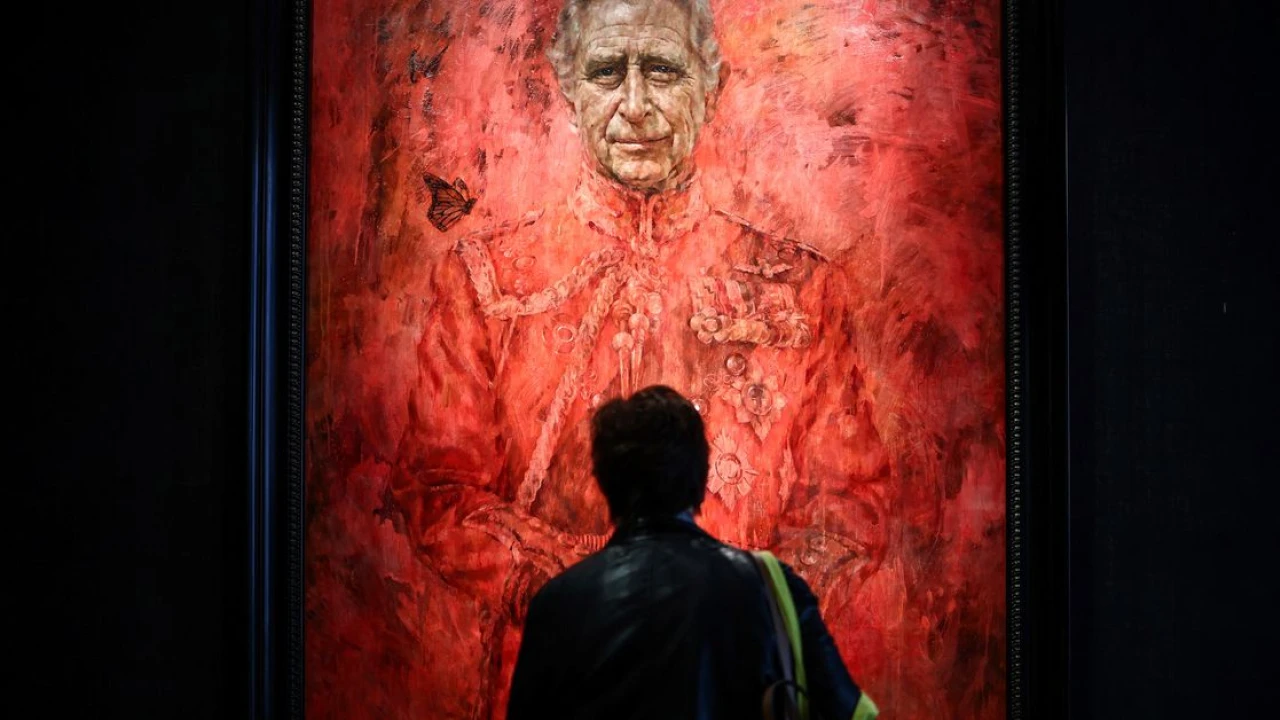
As far back as the 1500s, the British Royal Family has used formal portraits to project a positive and authoritative image. Their most recent entry, however, is giving audiences a very different impression, the latest in a series of public relations blunders at a tenuous time for the monarchy.
The new portrait of King Charles, by British artist Jonathan Yeo, features the monarch looking on serenely while wearing a red Welsh Guards uniform against a red backdrop. Aside from his hands and face, the portrait is covered in red paint strokes, a visual that for some onlookers, recalled flames, blood, and horror films.
“It looks like he’s bathing in blood,” a commenter quipped on an Instagram post announcing the portrait. “To me it gives the message the monarchy is going up in flames or the king is burning in hell,” another commenter wrote.
King Charles unveils his first official portrait since coronation. pic.twitter.com/YVGtlnDhx7
— Pop Base (@PopBase) May 17, 2024In his description of the painting, Yeo says a chief aim was to capture Charles’s evolution as a leader and ascension to the throne. The painting also includes a butterfly hovering above Charles’s right shoulder, an addition the king reportedly suggested himself to illustrate his transformation and commitment to environmental causes.
For some, the bold palette of the painting conjured more brutal aspects of the monarchy’s history, however. Certain observers have interpreted the work as a reminder of the Crown’s bloody advancement of colonialism. “It almost alludes to some sort of massacre that he’s been part of,” Tabish Khan, a London art critic, told Business Insider. “Given the royal family’s history and ties to colonialism and imperialism, it’s not hard for people to look at it and then make the leap that it’s somehow related to that.”
Others have dabbled in memes referencing The Picture of Dorian Gray, the painting of a villain from Ghostbusters 2, and the anecdote Charles once told about wanting to be Camilla’s tampon.
And while much of the response has been poking fun at the portrait, the controversy also points to deeper issues the monarchy faces, as it navigates an uncertain transition after Queen Elizabeth II’s death and grapples with its own past.
The painting aimed to capture Charles’s transformation
Yeo, an established artist who has also painted former UK Prime Minister Tony Blair as well as Charles’s father Prince Philip and his wife Queen Camilla, sat with Charles four times for his first portrait as King.
Prince Philip, Duke of Edinburgh 1921-2021
He was a hugely impressive man in person, who’s public persona belied a fierce intelligence, quick humour and seemingly endless curiosity. Very happy memories of sittings at Buckingham Palace back in 2006#rip #princephilip pic.twitter.com/mCYS6odFRv
“Royal portraits in the past have had an important role to play in signifying power and projecting an image,” the BBC’s Katie Razzall writes. “They were part of the tools used to ensure the survival of the monarch.”
One of Yeo’s aims with the painting, which he began in 2021, was to underscore Charles’s essence as a person, how he’s changed as he’s taken on the role of king and the struggles he’s endured. “My interest is really in figuring out who someone is and trying to get that on a canvas,” Yeo told the BBC.
Yeo’s website describes the color scheme as injecting a “dynamic, contemporary jolt” to the work, differentiating it from past portraits. The red is also inspired by the bright red color of the Welsh Guards uniform and is intended to give a nod to Charles’s military service; he became a colonel in the Welsh Guards in 1975. It’s also a color Yeo has used in the past, with paintings of actor Giancarlo Esposito and World War II veteran Geoffrey Pattinson featuring similar color schemes.
Many of Yeo’s past works are composed much like Charles’s, with one dominant color serving as the background and the subject’s face seemingly floating in the foreground.
According to Yeo, both the king and queen had previously seen parts of the painting and appeared to respond positively at the time. “Yes, you’ve got him,” Camilla reportedly said about his capturing Charles’s personality. The artist notes that Charles was surprised by the color, but broadly seemed to like the unfinished work he saw. In a video clip of the official unveiling, Charles himself appears initially startled by the painting.
The portrait’s reception recalls the monarchy’s problems
Much like US presidential portraits, the paintings of UK monarchs are intended to send a message about their leadership and character.
In one of former President Barack Obama’s portraits, artist Kehinde Wiley featured him surrounded by green foliage, a move that honored his upbringing in different places, and that marked a break from past presidential portraits.
The red in King Charles’s portrait had much less flattering connotations for some observers, though, as they see allusions to the country’s colonialism. For centuries, the British Empire violently seized power in numerous countries — including India, Kenya, and New Zealand — and the monarchy was a key symbol of its authority in those places.
Even today, the king is still considered a figurehead, and the “head of state” in 15 independent countries that are part of the British Commonwealth. Many — including Jamaica — are actively working to remove Charles as their official “head of state,” a role that’s purely symbolic but nonetheless represents Britain’s history of oppression.
In this capacity, and others, the modern monarchy remains a key symbol of the UK’s governance, even though royals don’t have practical policymaking power like Parliament and the prime minister.
As such, many experts and people from former colonies have been eager to see the monarchy do more to reckon with its imperial history, and to more explicitly acknowledge it.
“Imagine a very different kind of monarchy, where in the name of decency rather than politics, a monarch could say things like, ‘We acknowledge and regret the role of Britain, the British government and the British monarchy in slavery and colonialism.’ That kind of moral leadership could have such a different impact in the world,” Priya Satia, a history professor at Stanford, previously told Time.
The portrait is, in a sense, the least of the monarchy’s recent problems as it navigates a difficult transition following Queen Elizabeth II’s 70-year reign. There was the awkward rupture with Charles’s youngest son Prince Harry and his wife, American actress Meghan Markle. Charles publicly disclosed a cancer diagnosis in February. His daughter-in-law, Princess Catherine of Wales, revealed her own cancer diagnosis in March, following months of rampant speculation about her well-being.
What was once a canvas for projecting royal authority has instead become another reckoning with what the monarchy stands for and the brutal history it’s failed to fully confront.
-

 Pakistan 1 day ago
Pakistan 1 day agoShehbaz nominated acting president of PML-N
-

 Pakistan 2 days ago
Pakistan 2 days agoSummer holidays announced in Punjab
-

 Business 2 days ago
Business 2 days agoPakistan's forex reserves surge $15mn
-

 Business 2 days ago
Business 2 days agoGold price dips by Rs600 per tola
-
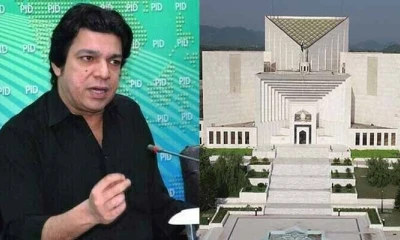
 Pakistan 2 days ago
Pakistan 2 days agoSuo Motu case: CJP seeks response from Vawda, Mustafa
-
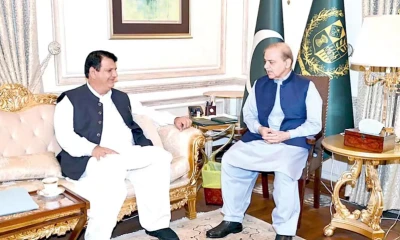
 Pakistan 21 hours ago
Pakistan 21 hours agoPM directs Amir Muqam to leave for Kyrgyzstan immediately
-
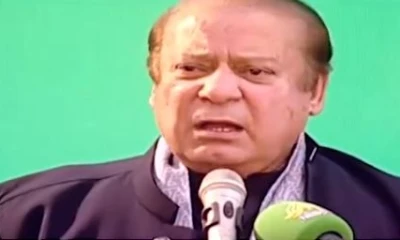
 Pakistan 1 day ago
Pakistan 1 day agoIn PML-N huddle, Nawaz Sharif deplores past 'injustices'
-
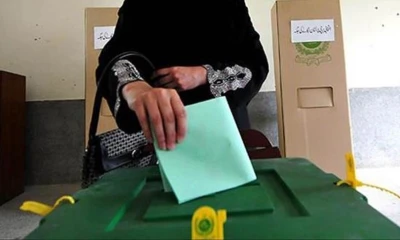
 Pakistan 16 hours ago
Pakistan 16 hours agoPolling for NA-148 Multan-1 by-election today












